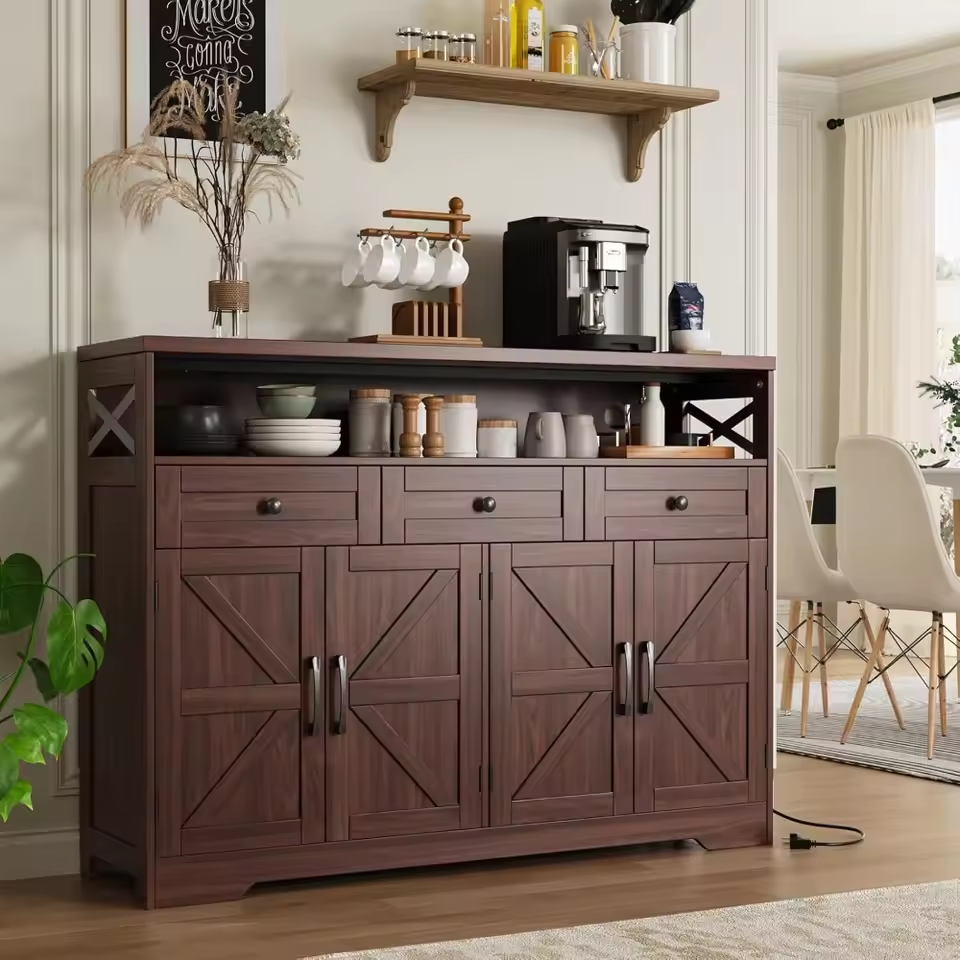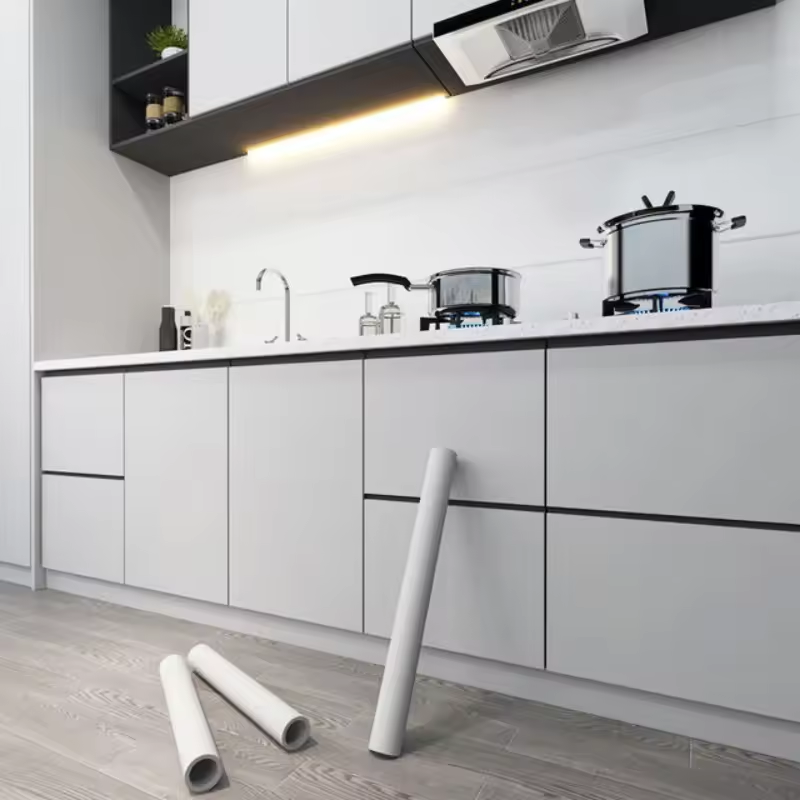Benefits of Under Cabinet Lighting
Under cabinet lighting is a game-changer for modern kitchens. It offers both practical and aesthetic advantages. By installing these lights, you improve workspace visibility and elevate the overall kitchen experience.
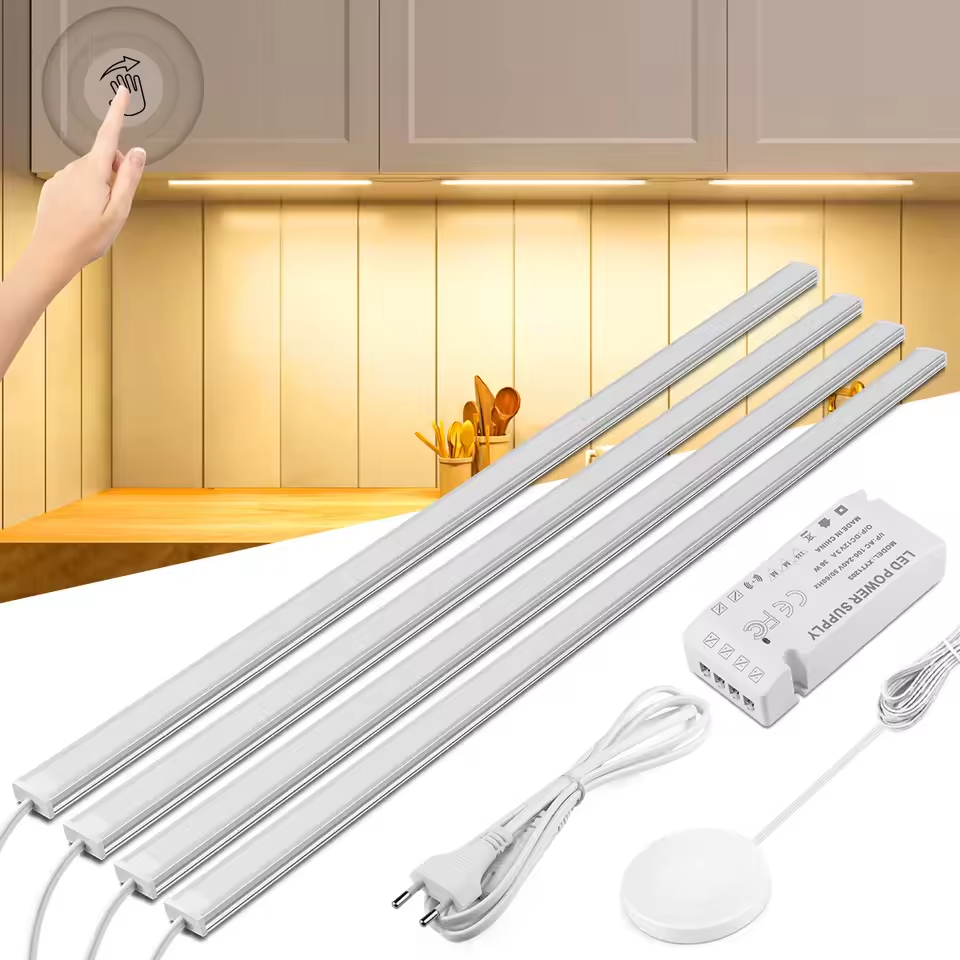
Enhancing Kitchen Functionality
Under cabinet lighting offers increased visibility for kitchen tasks. It eliminates shadows caused by overhead lights, making food preparation safer and more precise. With proper lighting, you can chop, cook, and clean with greater ease. Adjustable options allow you to create the perfect light for any activity.
Improving Aesthetics and Ambiance
Under cabinet lights beautify the kitchen by adding a warm and inviting glow. They highlight backsplashes and countertop materials, enhancing design elements. Choose dimmable lights to switch between task lighting and ambient lighting for dinner parties or casual evenings.
Energy Efficiency and Cost Savings
Energy-efficient under cabinet lighting, especially LED options, reduces electricity usage. LEDs consume less power and last longer, minimizing replacement costs. Your energy bills decrease while maintaining effective lighting. Investing in energy-efficient lighting pays off in the long term.
Types of Kitchen Under Cabinet Lighting
When selecting kitchen under cabinet lighting, it’s crucial to understand the available options. Each type has its own benefits and is suited for specific needs. Let’s explore the most common types.
LED Lights
LED lights are the most popular choice for under cabinet lighting. They are energy-efficient and consume less power compared to other options. LEDs last longer, reducing replacement costs over time. These lights emit little heat, keeping your kitchen cool and comfortable. Their versatility allows for dimmable settings, different colors, and various shapes. If you want durable and energy-friendly lighting, LEDs are a great option.
Fluorescent Lights
Fluorescent lights offer bright, even illumination under cabinets. They’re more affordable and consume less energy than halogen or xenon lights. Fluorescents are ideal for task-specific lighting due to their high brightness levels. However, they take a moment to warm up and aren’t dimmable. Keep in mind that fluorescent bulbs need proper disposal, as they contain mercury.
Halogen Lights
Halogen lights deliver bright and crisp illumination. They are a perfect choice if you want lighting that highlights details. Halogens produce a warm white glow, adding a sophisticated look to your kitchen. However, they generate more heat and consume more power than LEDs. Consider adequate ventilation if you choose halogen under cabinet lighting.
Xenon Lights
Xenon lights provide the warmest glow among all options. Their light is inviting and enhances kitchen ambiance. They don’t flicker and reach full brightness instantly when turned on. Unlike halogen, xenon lights produce less heat. However, they are less energy-efficient compared to LEDs and fluorescent lights. Use xenon for areas where ambiance matters more than efficiency.
By understanding these types of kitchen under cabinet lighting, you can make an informed decision that suits your needs and style.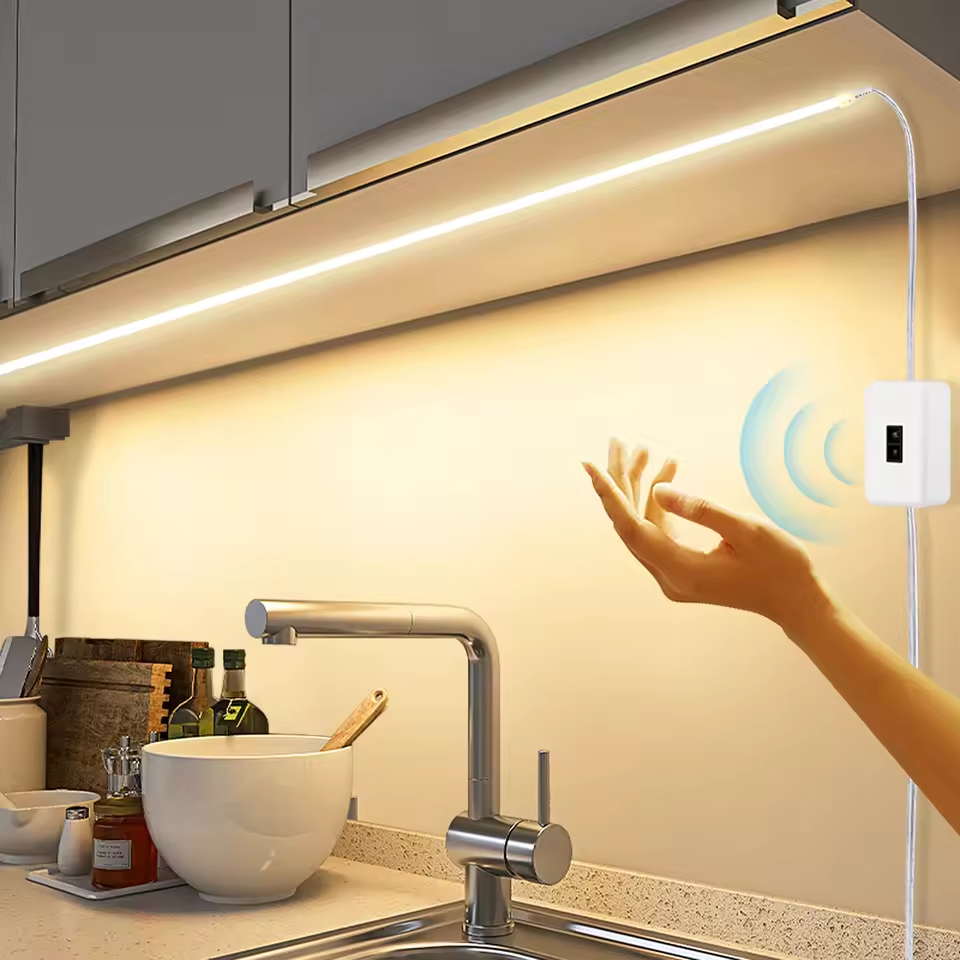
Popular Installation Methods
Choosing the right installation method for kitchen under cabinet lighting is crucial. Each method offers unique benefits and suits different kitchen layouts and styles.
Linear Lighting Strips
Linear lighting strips are versatile and provide consistent illumination across the cabinet length. They are easy to install and offer seamless light distribution. LED linear strips are the most energy-efficient option and can be dimmable. These strips work well for both tasks and ambiance, making them a popular choice.
Puck Lights
Puck lights are small, round, and provide focused lighting. They are perfect for highlighting specific areas under cabinets, such as a coffee station or decorative display. Puck lights can be surface-mounted or recessed for a sleek look. They usually come in LED, halogen, or xenon versions, allowing you to choose based on energy efficiency and warmth.
Rope Lighting
Rope lighting consists of flexible tubes housing LED lights. They are excellent for creating soft, ambient glow under cabinets. Rope lights are easy to install and work well for indirect lighting effects. While not ideal for task lighting, they excel at enhancing the kitchen’s design and atmosphere.
By understanding these installation methods, you can select the one that best fits your kitchen needs.
Tips for Choosing the Right Lighting
Choosing the right kitchen under cabinet lighting can make a significant impact. It ensures functional and stylish illumination tailored to your space and needs. Here are key factors to consider.
Matching Lighting to Your Kitchen Style
Select lighting that complements your kitchen’s design style. For modern kitchens, opt for sleek LED strips or puck lights. Traditional kitchens may benefit from warm halogen or xenon lights. Consider the color temperature of the lighting. A cooler tone suits contemporary designs, while warmer tones enhance classic or rustic kitchens. Matching the lighting finish to kitchen hardware, like handles or faucets, can unify the look.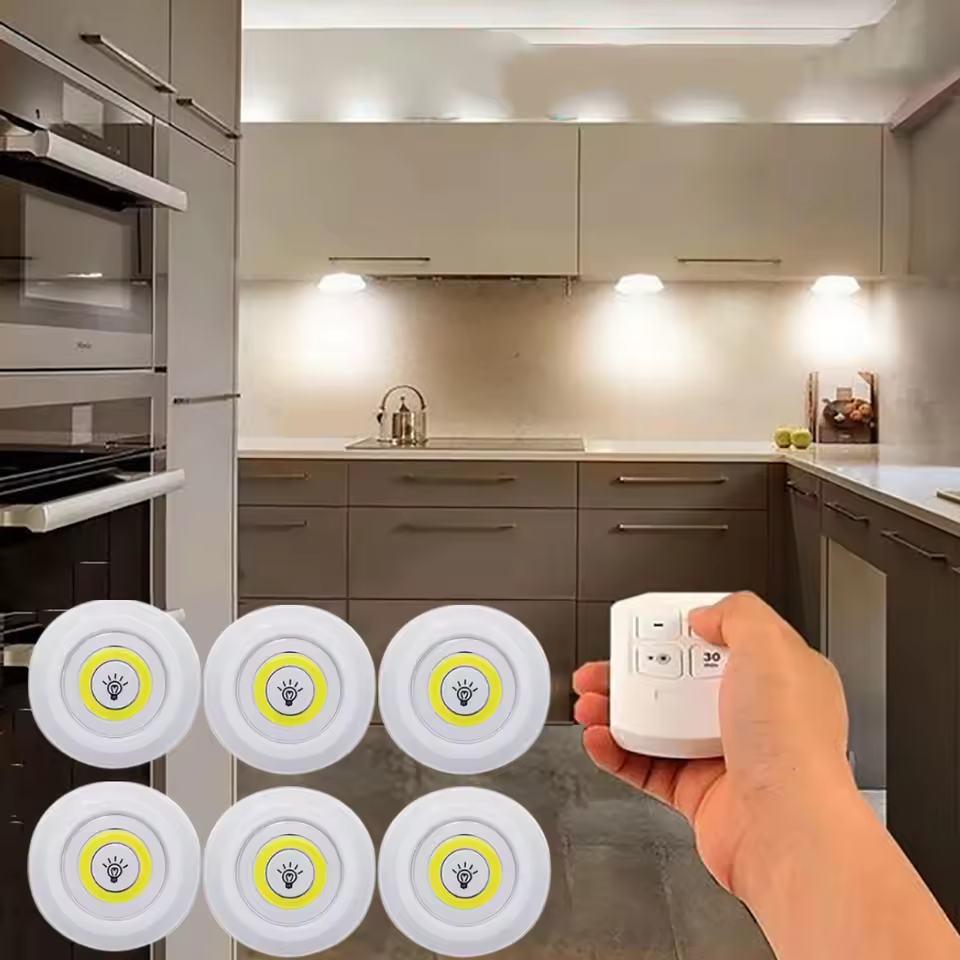
Considering Brightness Levels and Controls
Determine the appropriate brightness for your needs. Bright lighting is ideal for tasks like chopping or cooking. Softer lights create a cozy ambiance for dining or entertaining. Opt for dimmable lights for flexibility. Dimmers let you adjust light levels for different activities. Also, consider lights with controls like remotes or smart home integration for ease of use. These features add convenience and customization options.
Selecting Durable and Long-Lasting Options
Choose lighting that is durable and energy-efficient. LED lights are both long-lasting and cost-effective. They are ideal for reducing electricity usage and require fewer replacements. Ensure your chosen lights are moisture-resistant, especially in kitchens with steam and heat. Check product warranties for added assurance of durability. Investing in quality lighting saves money over time and minimizes maintenance efforts.
By considering kitchen style, brightness, and durability, you can choose the perfect lighting. This thoughtful approach improves your kitchen’s functionality and appearance.
DIY Installation vs. Professional Wiring
Installing kitchen under cabinet lighting offers two main approaches: DIY installation or professional wiring. Your choice depends on individual skill level, the project’s complexity, and your budget.
Step-by-Step Guide to DIY Installation
DIY installation is suitable for those who enjoy home improvement projects. Follow these steps to get started:
- Plan the Layout: Measure the space under cabinets and decide on the lighting type and placement.
- Gather Necessary Tools: Collect tools like a screwdriver, adhesive tape, power drill, and wire connectors.
- Turn Off Power: Switch off electrical power at the circuit breaker to ensure safety.
- Position the Lights: Place the lights in your planned spots before affixing them.
- Mount the Fixtures: Use adhesive backings, screws, or clips to install the lights under the cabinets.
- Connect to Power: Plug the lights into an outlet or connect them to existing cabinet wiring.
- Test the Lighting: Ensure all fixtures are working properly and adjust if needed.
DIY installation saves money and can be completed quickly using plug-and-play options like LED strips or puck lights. However, it may lack the professional finish of wired installations.
Why Hire a Professional for Complex Setups
For complex lighting setups or permanent wiring, hiring a professional is often the better choice:
- Advanced Wiring Knowledge: Professionals handle intricate electrical connections, reducing the risk of mistakes.
- Code Compliance: They ensure the project meets electrical code requirements and safety standards.
- Custom Solutions: Professionals can design tailored solutions like hidden wiring and smart lighting integration.
- Time-Saving: They complete installations quickly and efficiently, reducing your workload.
- Avoid Damages: Professionals minimize risks of damaging cabinets, walls, or electrical systems.
Hiring a professional is especially recommended for homes with older wiring or if smart features are desired. While it costs more, the quality and safety benefits often outweigh the expense.
Choosing between DIY and professional installation depends on project complexity and personal preference. Weigh effort, cost, and expertise before making a decision.
Maintenance and Troubleshooting
Proper maintenance ensures your kitchen under cabinet lighting stays functional and efficient. Addressing issues promptly keeps it looking and working its best.
Cleaning and Bulb Replacement
Regular cleaning extends the life of your lighting. Dust and grease often accumulate on fixtures. Follow these steps for cleaning and bulb replacement:
- Turn Off Power: Switch off the lights to avoid accidents.
- Wipe With a Damp Cloth: Use a soft cloth with mild detergent for cleaning.
- Avoid Harsh Chemicals: Strong cleaners can damage the fixture’s finish.
- Inspect Bulbs: Check for dim or broken bulbs regularly.
- Replace Bulbs Carefully: Ensure you pick the correct type and wattage for replacements.
Cleaning your lights prevents wear from dirt and grease buildup. Replace bulbs as needed to maintain brightness.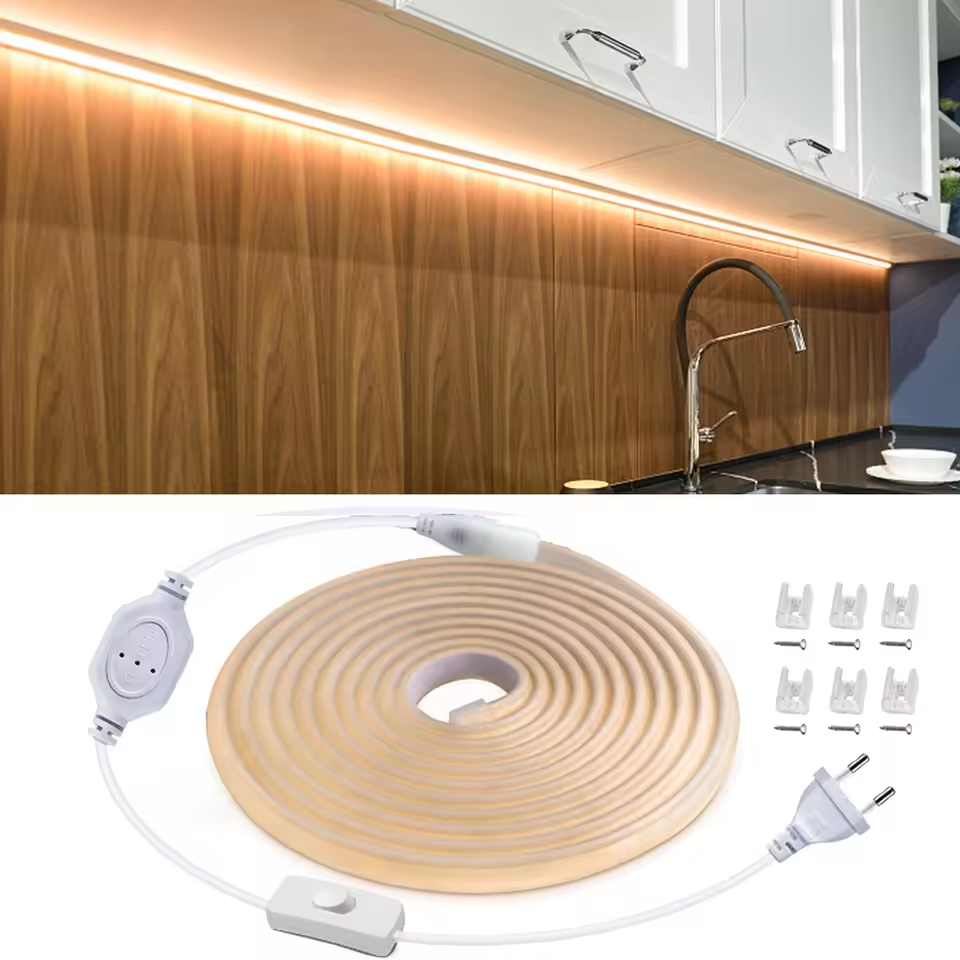
Solving Common Lighting Issues
Under cabinet lighting may face occasional problems. Learn how to fix common issues:
- Lights Not Turning On:
- Check the power connection and ensure outlets are functional.
- Inspect wiring for frays or loose connections.
- Flickering Lights:
- Replace faulty bulbs or check the dimmer switch.
- Verify voltage compatibility with your lighting system.
- Uneven Brightness:
- Adjust the placement of lights for better coverage.
- Clean dirty fixtures that may block light output.
- Heat Build-Up:
- Use LED lights that produce less heat.
- Ensure proper ventilation around fixtures.
Troubleshooting minor problems avoids costly repairs. Regular checks ensure your lights stay efficient and functional.
Cost and Budget Considerations
When choosing kitchen under cabinet lighting, cost plays a significant role. Understanding pricing helps you make informed decisions. Balancing cost with quality ensures you get value for your investment.
Price Range for Different Lighting Types
Various types of under cabinet lighting come at different price points:
- LED Lights:
- Initial Cost: Typically $20–$50 per fixture.
- Long-Term Cost: Lower due to energy efficiency and longer lifespan.
- Fluorescent Lights:
- Initial Cost: Generally $15–$30 per fixture.
- Long-Term Cost: Moderate as they are less energy-efficient than LEDs.
- Halogen Lights:
- Initial Cost: Around $10–$25 per fixture.
- Long-Term Cost: Higher due to frequent replacements and higher energy use.
- Xenon Lights:
- Initial Cost: Typically $20–$40 per fixture.
- Long-Term Cost: Moderate, balancing warmth with energy costs.
Price variations depend on brands, features, and design customization. Consider initial cost and long-term savings before purchasing.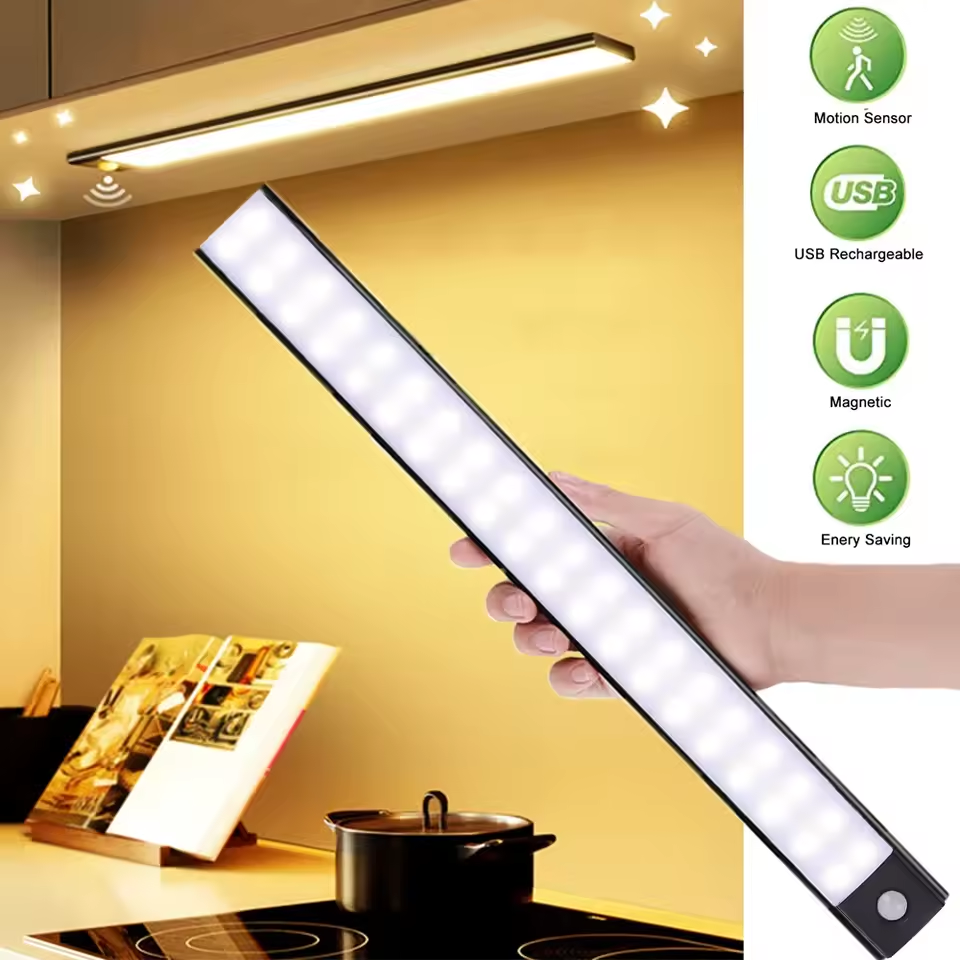
Balancing Quality with Budget
Balancing quality and affordability ensures you make the best choice for your kitchen:
- Plan Your Budget:
- Decide how much you want to spend.
- Allocate funds for essential features like dimming or energy savings.
- Focus on Energy Savings:
- Invest in LED lights to cut down electricity bills over time.
- Avoid options with high operational costs like halogen lights.
- Prioritize Durability:
- Spend slightly more for long-lasting lights.
- Durable options reduce replacement costs and maintenance effort.
- Shop Smart:
- Compare prices online and in stores.
- Look for discounts or combo packages.
- Stick to Essentials:
- Skip unnecessary add-ons if your budget is tight.
- Focus on functional lighting for your kitchen needs.
By considering both immediate and future costs, you can find quality under cabinet lighting within your budget.
